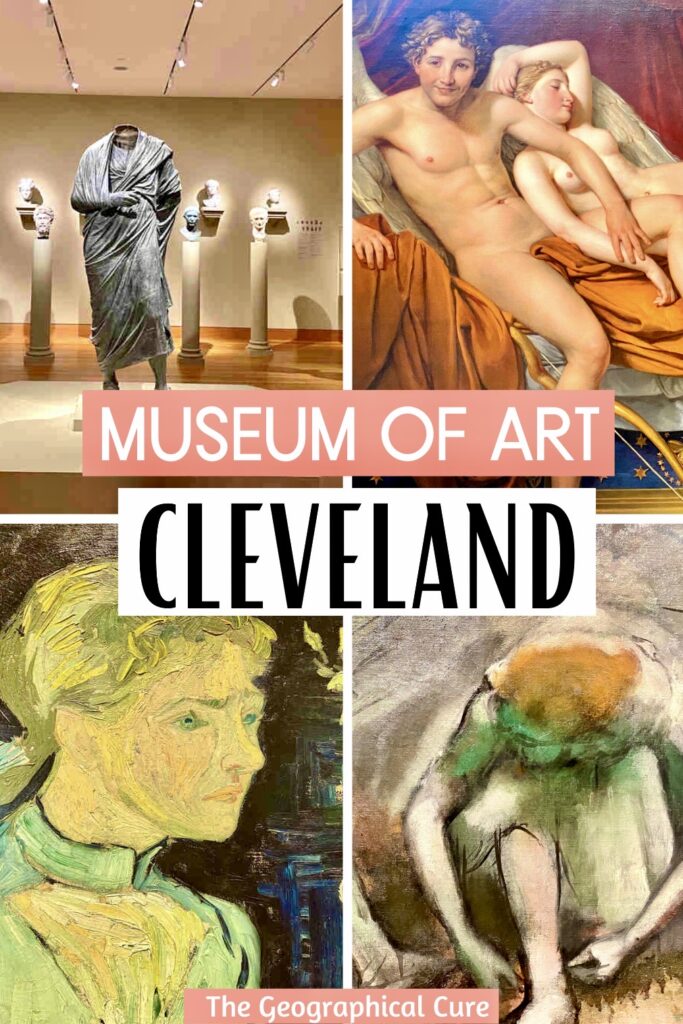Planning a trip to Cleveland? Here’s my guide to visiting the Cleveland Museum of Art. It’s my favorite attraction in Cleveland. The museum is an absolute highlight of the underrated city.
The Cleveland Museum of Art is not something you’d expect to find in northeast Ohio. It’s one of the finest museums in the United States. And best of all, it’s absolutely free (except for special exhibitions).
In this Cleveland Museum of Art guide, I give you an overview of the museum and 20 of its must see masterpieces.
These masterpieces stretch over 6,000 years, from antiquity to the present. There’s something for everyone in this expansive collection.
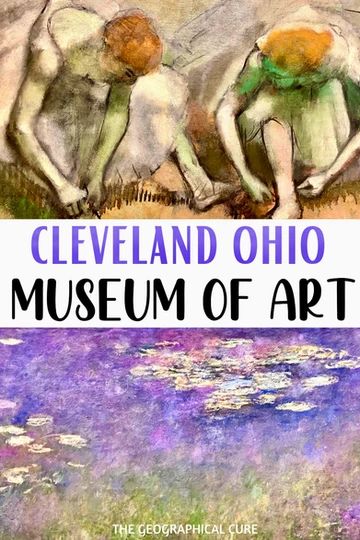
Overview of the Cleveland Museum of Art
The museum is well organized. There are plenty of velvet covered benches, if your feet grow weary from standing and walking.
The museum has everything from Roman antiquities to modern art. Here’s a quick overview of the layout.
The first floor casts you back in time to the Greek, Roman, Egyptian, and Islamic periods. The most impressive pieces, I thought, were the Cleveland Apollo (a Greek sculpture) and the statue of Marcus Aurelius (a Roman sculpture).
There’s a beautiful collection of Greek vases. You’ll also find beautiful tapestries that were originally housed in the Chateau Chaumont in France’s Loire Valley.
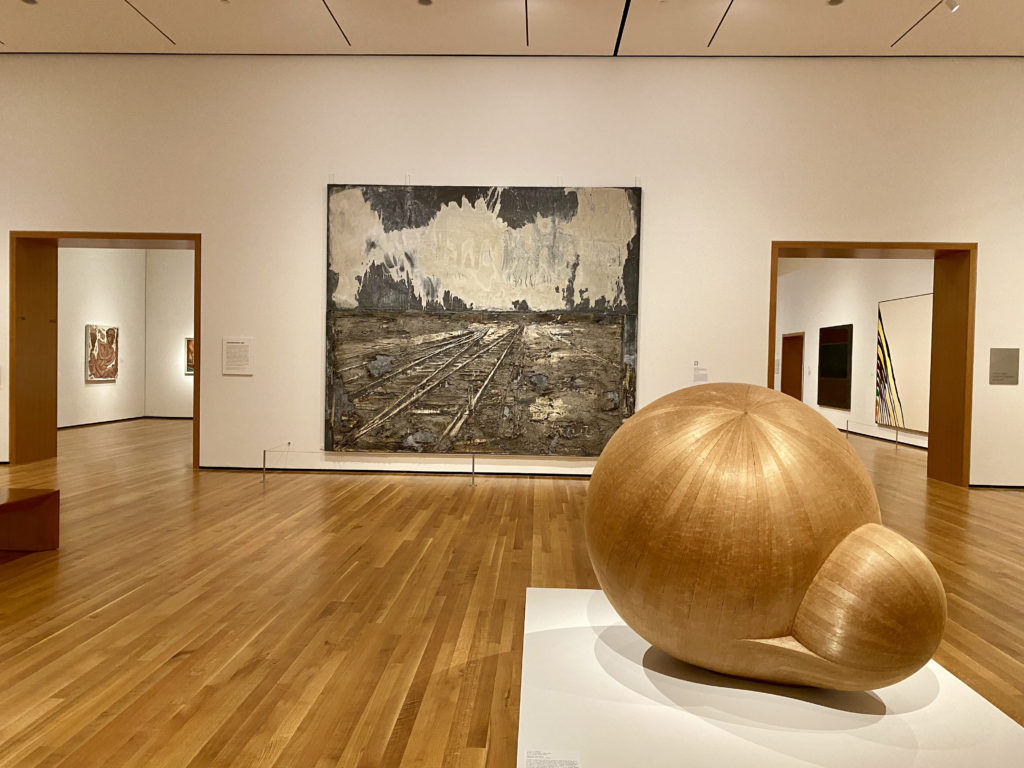
There’s also a goodly collection of Medieval and early Renaissance art. You don’t find those pieces terribly often in the United States.
My favorite piece was a tondo by Filippino Lippi. But there are also works by Botticelli, Fra Angelico, and Filippo Lippi.
On the second floor, you’ll find an impressive collection of French, British, and American art and furnishings from the 16th to 18th centuries.
You’ll see works by Jacque-Louis David, Thomas Eakin, John Singer Sargent, and a stunning collection of Tiffany stained glass.
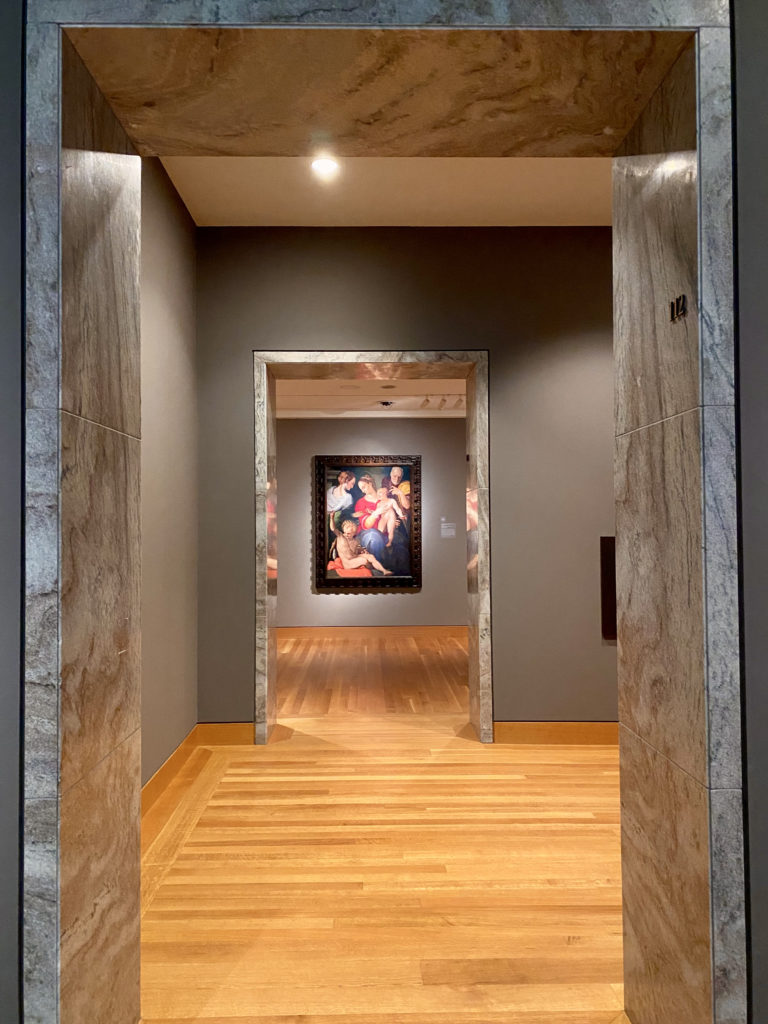
In the East Wing, you’ll find the museum’s modern art collections. There are pieces by Picasso, Van Gogh, Monet , Degas, Matisse, and Dali.
There’s also quite a few pieces by the great French sculptor Auguste Rodin, including a version of his magnificent Age of Bronze.
You can download the museum’s ArtLens App to get a preview of the museum before visiting.
READ: Tips For Visiting a Museum
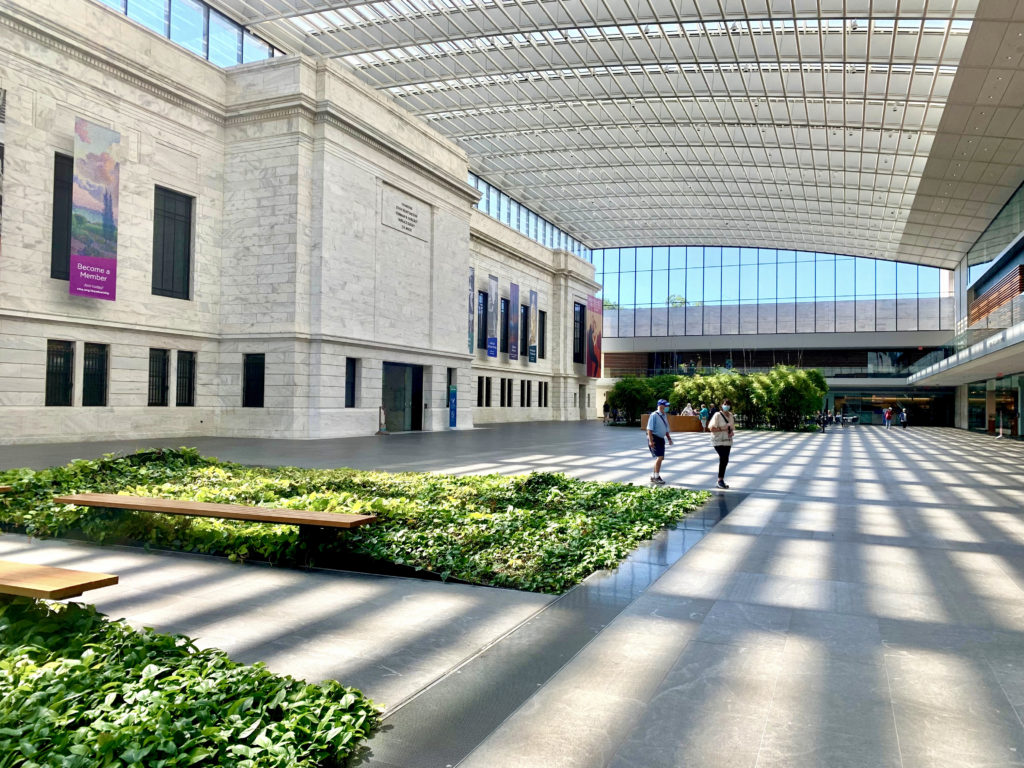
Guide To The Cleveland Museum of Art: What To See
Here are the masterpieces you can’t miss at the Cleveland Museum of Art:
1. The Atrium
The Ames Atrium is the majestic centerpiece of the museum. The soaring space was designed by Rafael Winoly.
It was named for the Ames family. They gifted the museum $20 million to help build the $350 million space.
It’s a lofty three story space, filled with plants. The atrium is enclosed by glass. The ceiling is glimmering perforated design.
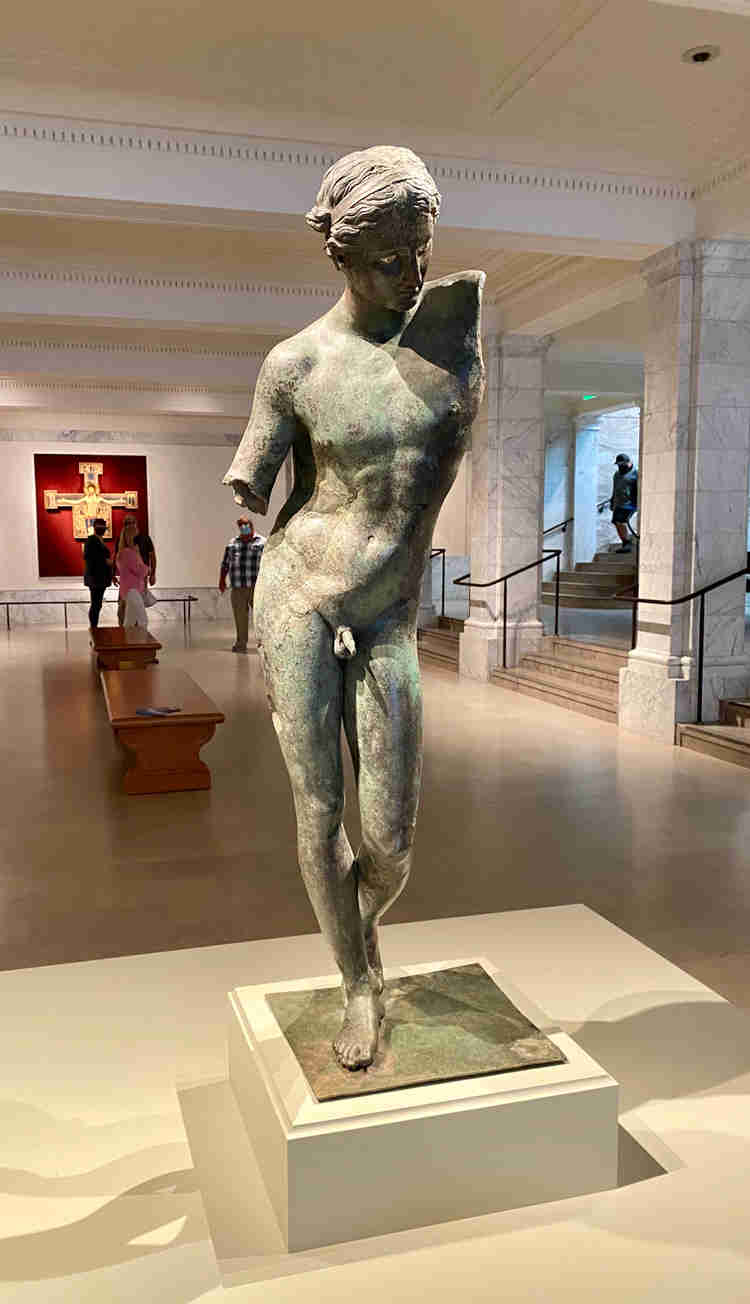
2. Cleveland Apollo
The Cleveland Apollo is likely the most famous and valuable piece at the Cleveland Museum of Art. The museum acquired it in 2004.
The Cleveland museum director David Franklin called the Cleveland Apollo “arguably the greatest antiquity in a North American collection.”
The Cleveland Apollo is likely an original Greek bronze from 350 B.C., rather than the more typical Roman copy. There is an exact Roman copy of the Cleveland Apollo in the Louvre Museum in Paris.
Original Greek statuary is extremely rare. Most of it was destroyed or plundered, and thus is lost to history.
The Cleveland Apollo was likely created by the Praxiteles. He was one of the greatest sculptors of Ancient Greece.
According to scholarship, the sculpture was originally called Lizard Slayer. Apollo was likely in the act of stabbing a lizard with an arrow, while leaning on a tree trunk.
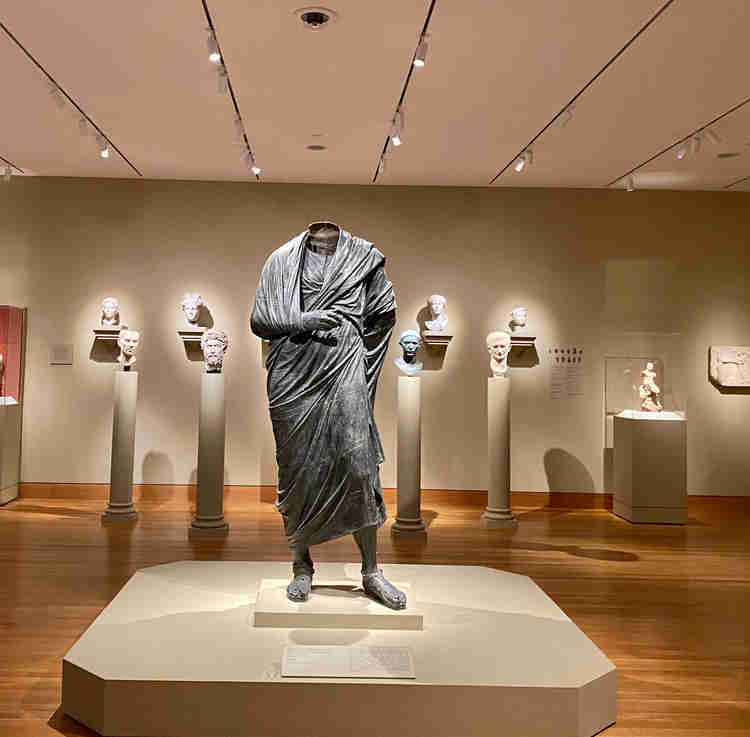
3. Statue of Marcus Aurelius
This is a beautiful, finely carved monumental statue. The figure is most likely the Roman emperor Marcus Aurelius. Aurelius was a student of Stoicism, which was a popular philosophy of the day in Rome.
The bronze statue is impressively draped. This elaborate detail also signifies that the statue is an imperial portrait.
The emperor posses with his left leg forward. His right arm is raised to the chest. This pose was one used by Greek artists.
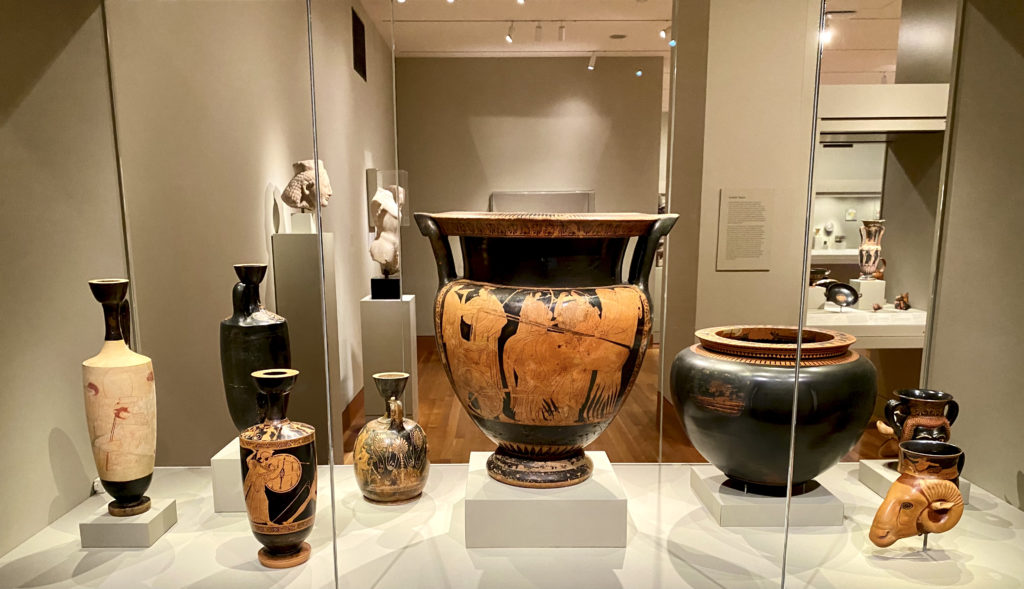
4. Greek Vases
The museum has a wonderful collection of Greek vases in its Greco-Roman collection. The most important is the Column-Krater Vase shown in the center of the photo above.
It’s the most important of 12 vases painted by a unknown Greek artist. The museum refers to the artist as The Cleveland Artist.
The chariot scene on the main side of the vessel is a divine one. You can see Apollo, who is identified by his lyre and laurel wreath.
With Apollo are three goddesses. They are most likely Artemis, Hera, and Hebe.
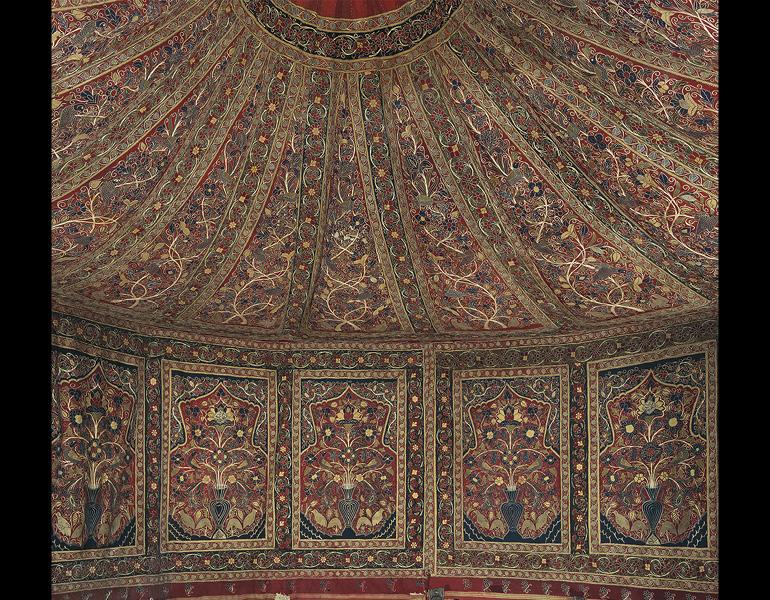
5. Muhammad Shah’s Royal Persian Tent
This is the only imperial Iranian tent in an American art museum. The tent is a legacy of the 19th-century Qajar Dynasty. It’s inscribed with the name of Muhammad Shah, who ruled from 1834 to 1848.
These imperial tents were not only considered shelter. They were also symbols of wealth and power.
The circular tent measures roughly 12 feet high and 13 feet in diameter. It’s made of wool embroidered with silk, flowers, vines and exotic birds.
When viewed from inside the tent, the embroidered panels create the effect of being enveloped in a warm and cozy paradise garden.
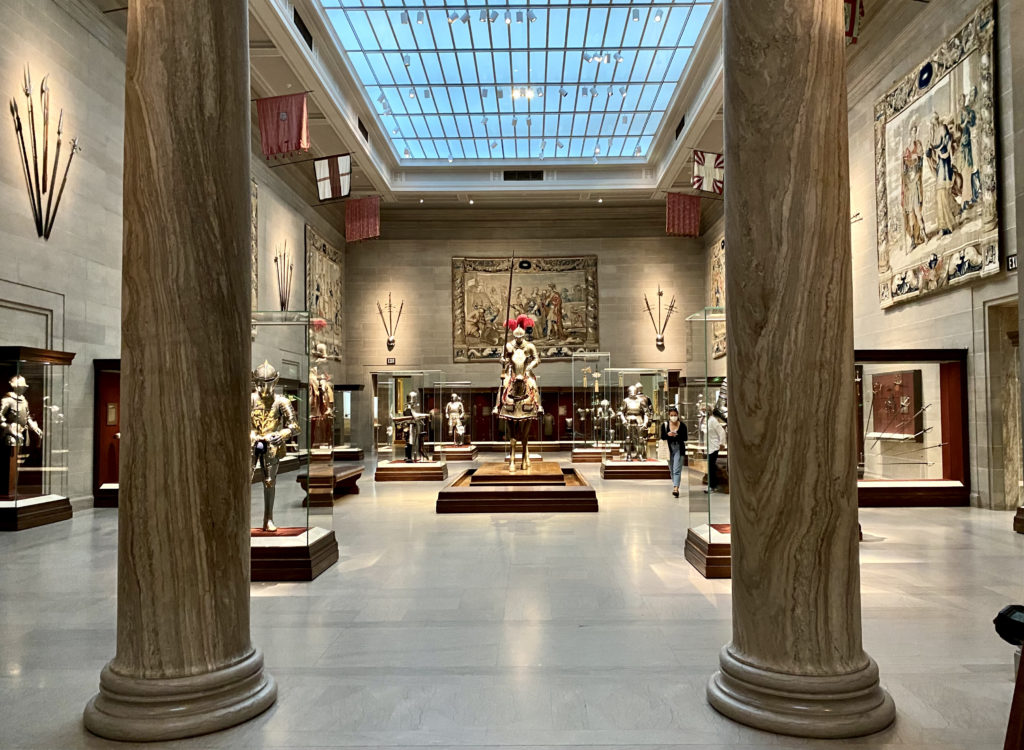
6. Armor Court
Armor Court is officially called the Joseph and Morton Mandel Armor Court.
It’s located on the second floor. The court is a beloved part of the museum. If you love military history, it’s a must see.
The Armor Court showcases a magnificent collection of arms, armor, swords, banners, and tapestries. At its center is the Rider and Horse, created by Linda Buck.
Click here to take a virtual tour of Armor Court.
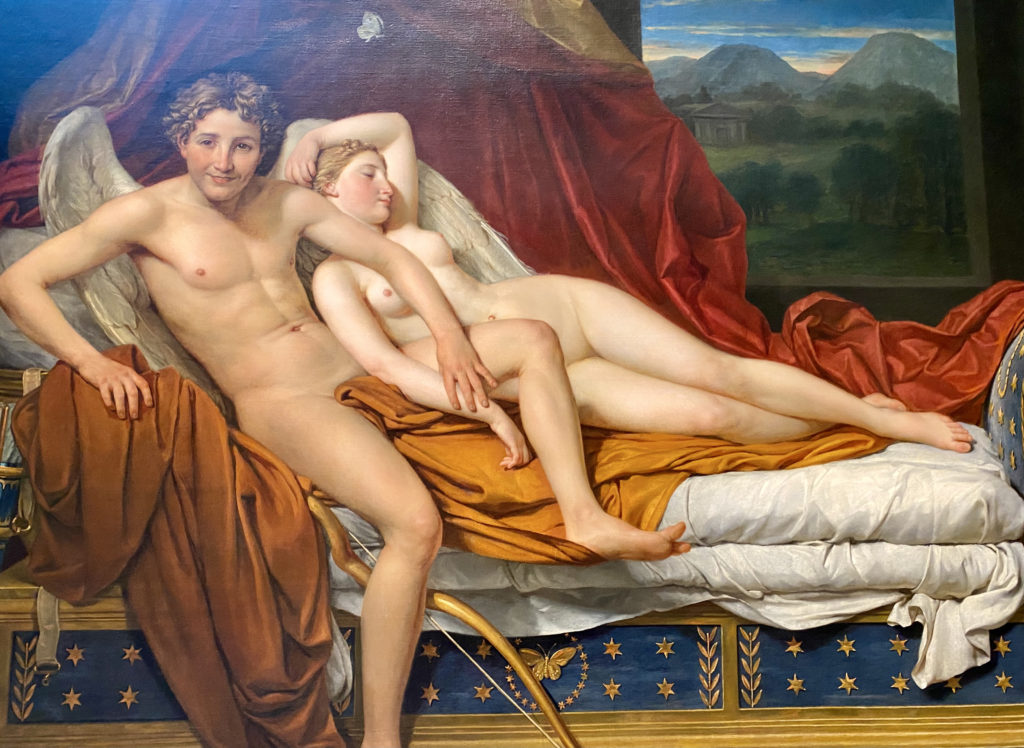
7. Jacque Louis-David’s Cupid and Psyche
Davis was a Neo-Classical painter from France. He rejected the prior excesses of the Rococo period of art. His refined linear paintings were perhaps the final triumph of traditional history painting.
In this painting, David used the myth of Cupid and Psyche. He explores the clash between idealized love and the physical reality of love.
Cupid was the lover of the mortal girl Psyche. He visited her nightly. But only on the condition that she could not learn his identity.
Cupid is usually depicted in an idealized God-like way. But here David presents his as a smirking teenager.
David’s interpretation was derived from ancient texts. For example, a poem by Moschus describes Cupid as bratty and mean spirited.
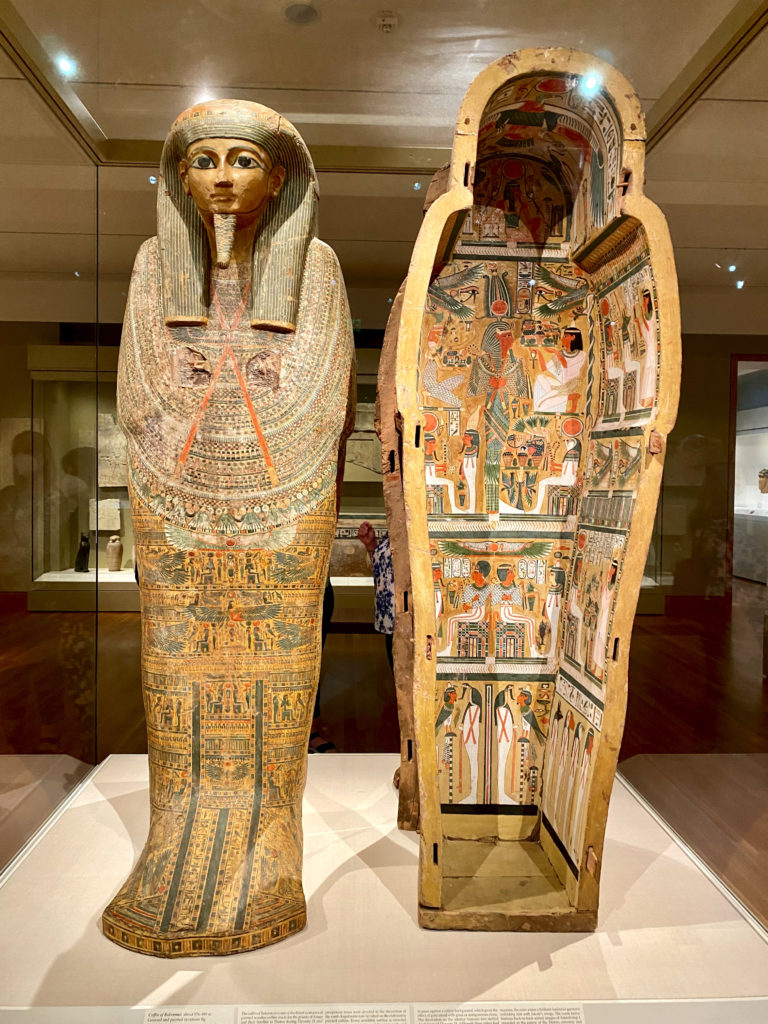
8. Ancient Egyptian Collection
The Egyptian Collection is a highlight of the Cleveland Museum. It’s one of the best Egyptian collections in the United States. The highlight is the beautiful coffins of Bakenmut and Neskhonsu.
The coffins are one of the finest painted wooden coffins from 21st and 22nd dynasty of he pharaohs.
To prevent looting, the pharaohs had undecorated and unmarked tombs. Instead, they poured their money into elaborately painted coffins.
The coffins are decorated with images of gods and goddesses and religious scenes. There are also symbols of magic and protective spells.
The museum also has plenty of artifacts from the reign of Amenhotep III.
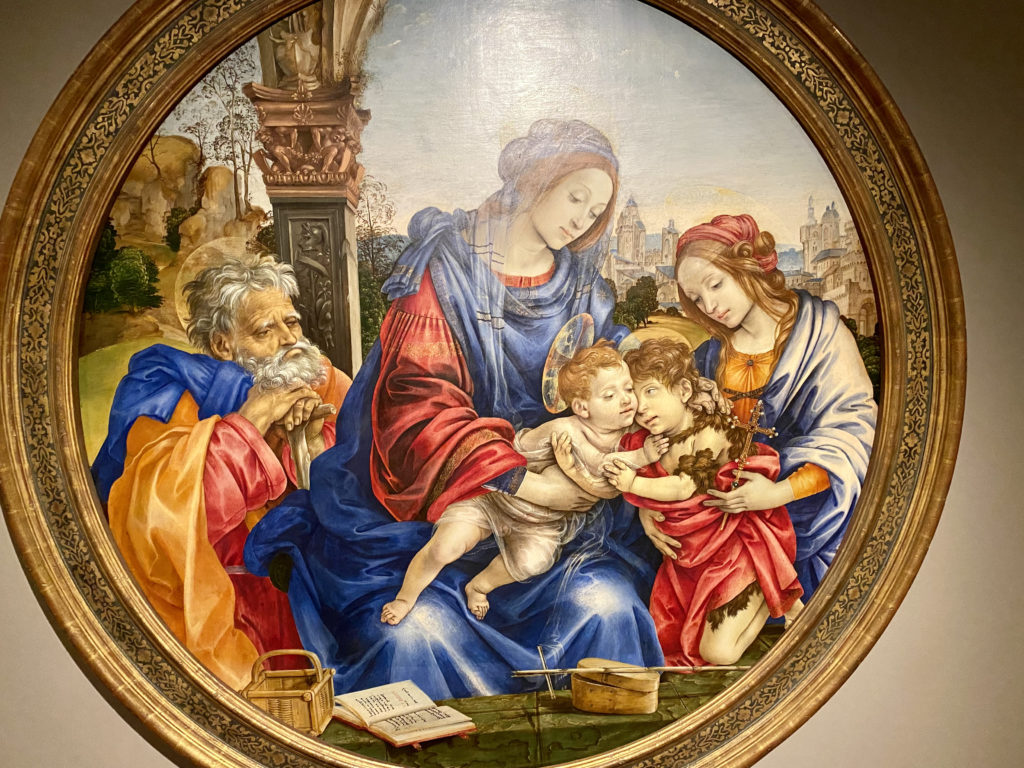
9. Filippino Lippi Tondo
Filippino Lippi was a superbly talented son of the artist Fra Filippo Lippi. Their works are mostly found in the prestigious Uffizi Gallery in Florence.
In this painting, Lippi uses the tondo format. A tondo is a round painting.
The tondo was a popular device in the early Renaissance, when art works from Florence were in demand. Though Lippi painted this piece when we was working in Rome.
The painting has a complex composition. Mary looks fondly at the baby Jesus. A realistically rendered God looks on from the left side.
At the top is a meticulously detailed architectural backdrop. It reflects the interest that early Renaissance artists like Lippi had in classical antiquity.
The painting is decorated with expensive materials. They would have demonstrated the patron’s good taste and power.
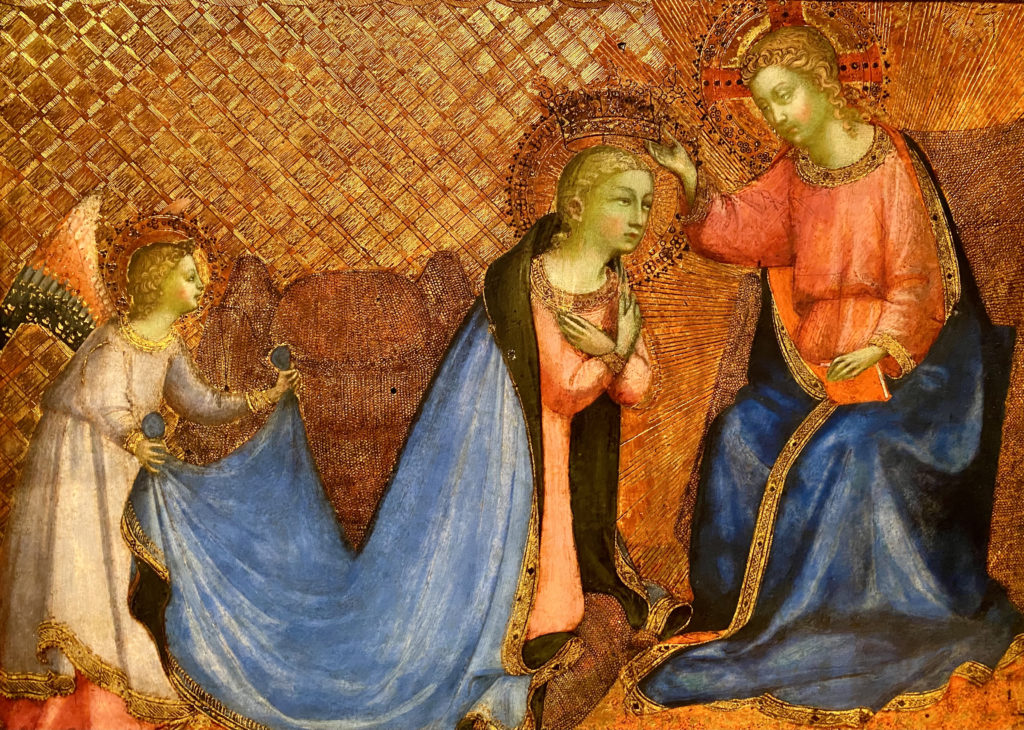
10. Fra Angelico’s Annunciation
With Giotto and Donatello, Fra Angelico helped transform the art world and usher in the High Renaissance. His humanistic pieces had beautiful delicate palettes.
His art works led him to be (posthumously) dubbed the “Angelic Painter” or Il Beato (the Blessed). The Florentine artist and art historian Giorgio Vasari described Fra Angelico as a “rare and perfect talent.” He was one of the extraordinary figures of the early Renaissance.
READ: Guide To Fra Angelico Frescos at Florence’s San Marco Monastery
The Annunciation is an early Fra Angelico work. This picture’s original use is uncertain.
It was likely part of an altar or may have been an object of private devotion. The panel has a rich finish and minutely detailed surface.
You see an angel holding Mary’s train while she kneels to receive the crown offered by Christ. The scene glimmers with gold and starry tapestries. Christ himself radiates light.
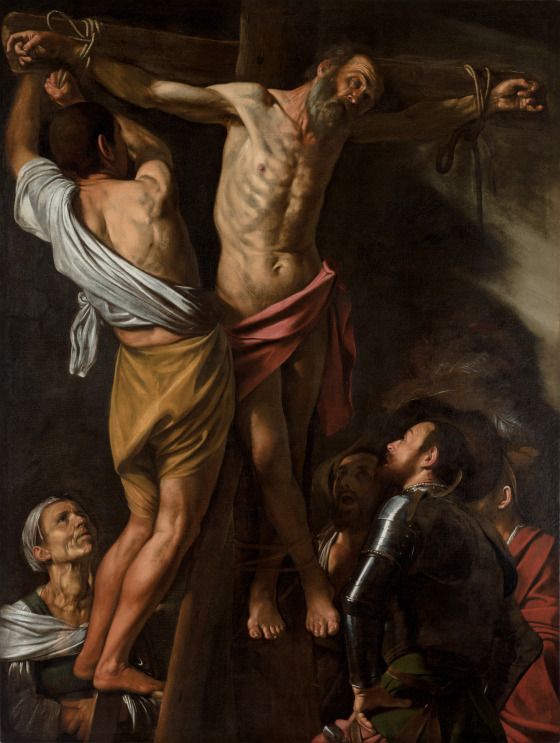
11. Caravaggio, Crucifixion of St. Andrew
The masterpiece by Caravaggio was acquired by the museum soon after its rediscovery in the 1970s. It’s one of only 8 Caravaggio paintings in the United States.
Unlike any other altarpiece by Caravaggio in the United States, this painting was created during the artist’s time as a fugitive in Naples, following an alleged murder in Rome.
The canvas portrays St. Andrew on the cross, his persecution a result of his propagation of Christianity.
Caravaggio’s artistic rendition is a study in hyper-realism, capturing an intimate and profound moment rather than merely presenting a gory spectacle, despite the presence of visceral details.
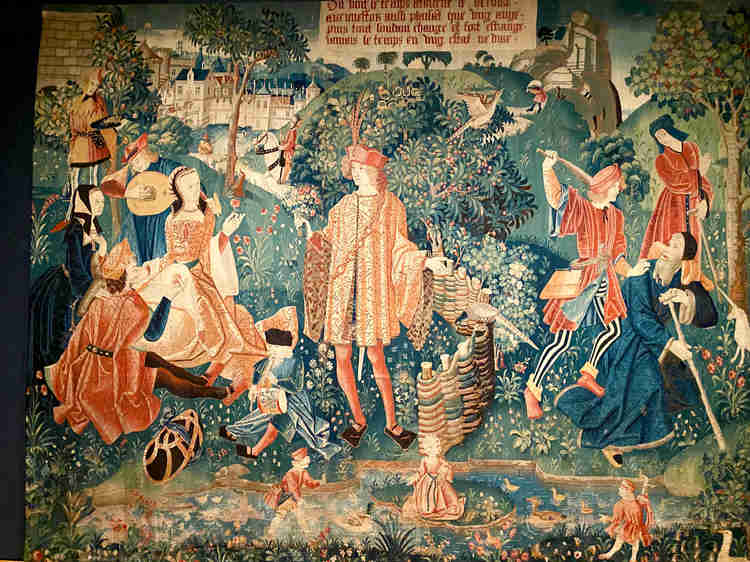
12. Chateau Chaumont Tapestries
The Chaumont tapestries were likely commissioned by Pierre Sala. In the 1500s, tapestries served as murals to cover walls in residences, churches, and palaces. These tapestries are from the Chateau Chaumont in France’s Loire Valley.
The image above is of the Time tapestry. The richly attired central figure is Sala. He offers a bouquet, which is a symbol of knowledge, to his pregnant daughter.
The figure of time is the old man with the staff. The tapestry has a shallow space, unnatural scale, and stylized figures. It almost looks like an early Renaissance painting.
The tapestries are intricate, indicating that the artisans were highly skilled.
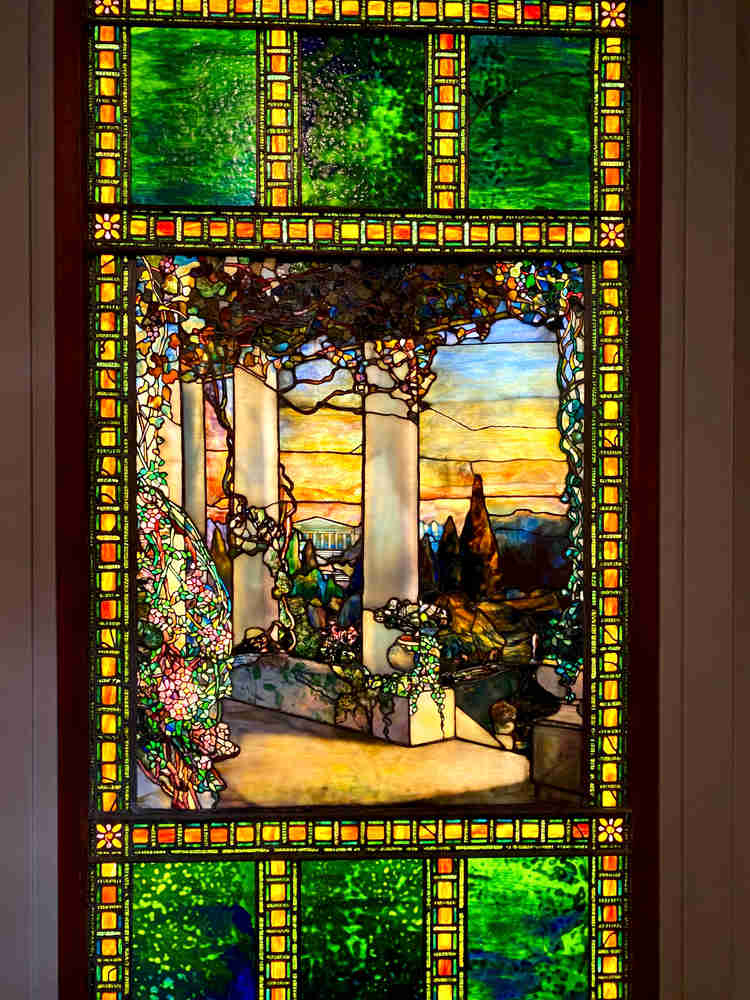
13. Tiffany Display
The Cleveland Museum of Art has some beautiful Art Nouveau stained glass. It was designed by the famed Louis Comfort Tiffany. He developed his artistic sensibility at his father’s famous jewelry shop in New York City.
Tiffany started out as a painter. But he quickly began collaborating with glass artists. His stained glass featured lush, sometimes wild-looking displays of varied garden species. To create his pieces, Tiffany used Favrile glass in mosaic panels.
Tiffany’s work was instantly popular. It became America’s greatest contribution to the Art Nouveau and Arts & Crafts movements.
I think his most beautiful pieces are Tiffany’s table lamps. The Cleveland Musuem’s Pansy Border Table Lamp from 1902-10 is absolutely stunning.
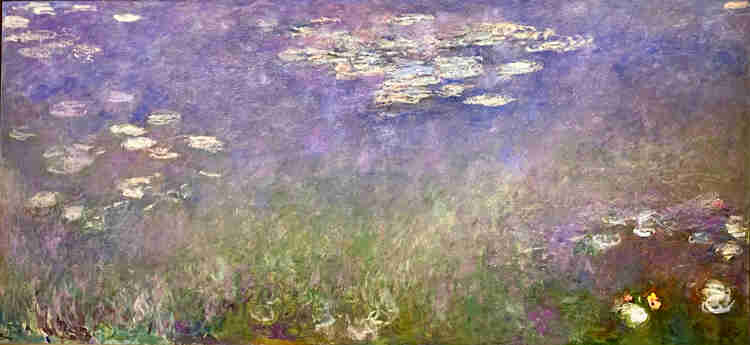
14. Monet’s Water Lilies
Monet’s water lilies are ravishing. Monet created over 250 paintings of his beloved water lilies. They were the main focus of his late career.
Monet had moved from Paris to Giverny. There, he gardened and painted his gardens. He once joked that he was “good for nothing except painting and gardening.”dominated the last decade of his life.
Monet’s water lilies are a panorama of light and water. They’re essentially a distillation of an enchanted garden. There is a sense of audacity and physicality not present in Monet’s earlier paintings.
This was a different palette from Monet’s other impressionist works. The pastels are gone. Monet replaced them with superheated colors. The lilies are a theater-like recreation of the experience of physically being at a pond.
The museum’s water lily panel was originally intended for the Musee de l’Orangerie, a stunning small museum in Paris. That museum has a custom designed oval room for Monet’s water lilies.
Monet died before the installation was completed. This painting was found in his studio. It wasn’t installed at the Orangerie, but sold to an American collector.
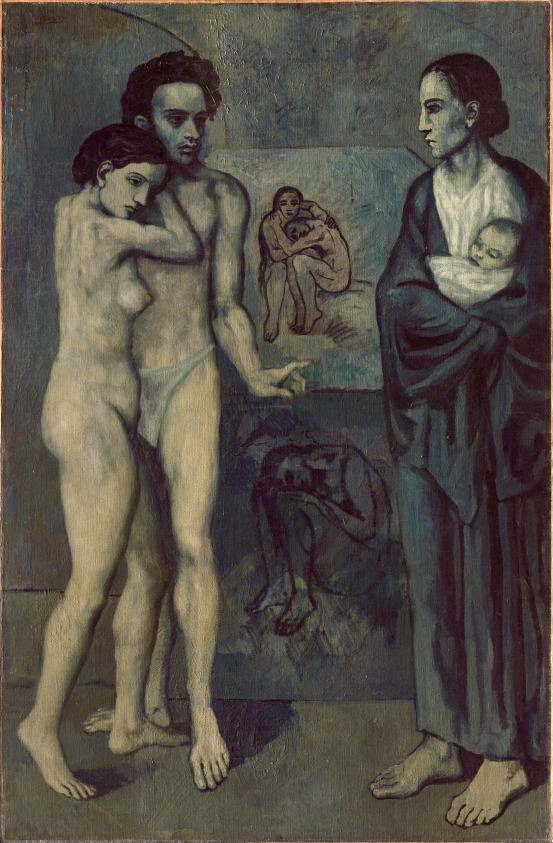
15. Picasso’s La Vie
La Vie is from Picasso’s Blue Period. Picasso’s paintings from this era are today regarded as the finest and most emotionally compelling examples of modern painting.
The Blue Period art works came after the suicide of Picasso’s best friend. Picasso was depressed and his works show it. Picasso was obsessed with existential themes such as life, love, sexuality, alienation, and death.
La Vie is one of the most famous Blue Period pieces. Typical of the era, Picasso used cold colors and a muted palette.
The painting has been interpreted as depicting the inevitable cycle of life. A working class couple is shown facing the hazard of real life.
The couple are likely teenage lovers who bore a child out of wedlock. One of their mothers has taken the child away to prevent their families from being shamed.
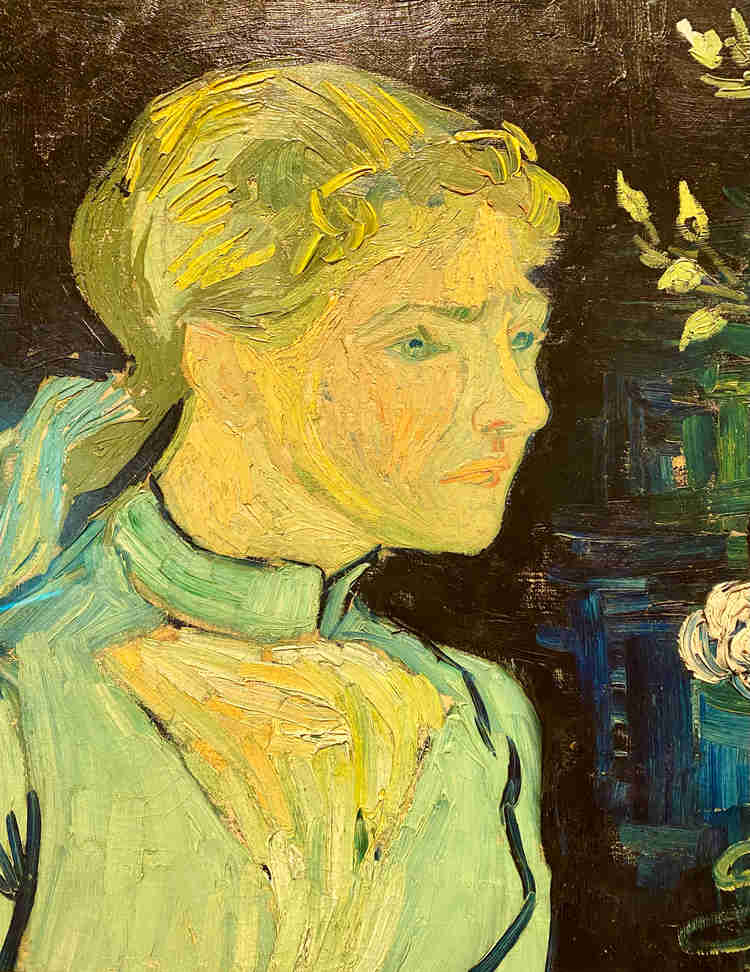
16. Van Gogh’s Adeline Ravoux
This painting is by the beloved Post Impressionist artist Vincent Van Gogh. It was painted in Auvers-sur-Oise, a beautiful town in northern France. Van Gogh moved there after leaving an asylum in Provence.
Van Gogh finished this portrait during the last few months of his life. The subject is the 13 year old daughter of an innkeeper.
Van Gogh didn’t want a photographic resemble of the girl. Rather, he wanted to show the “impassioned aspect of contemporary life.” The portrait has Van Gogh’s trademark swirling lines, emotional honesty, and bold vivid color.
If you’re a rabid Van Gogh fan like me, make a pilgrimage to Paris. The world’s largest collection of Van Gogh art works are in the Musee d’Orsay.
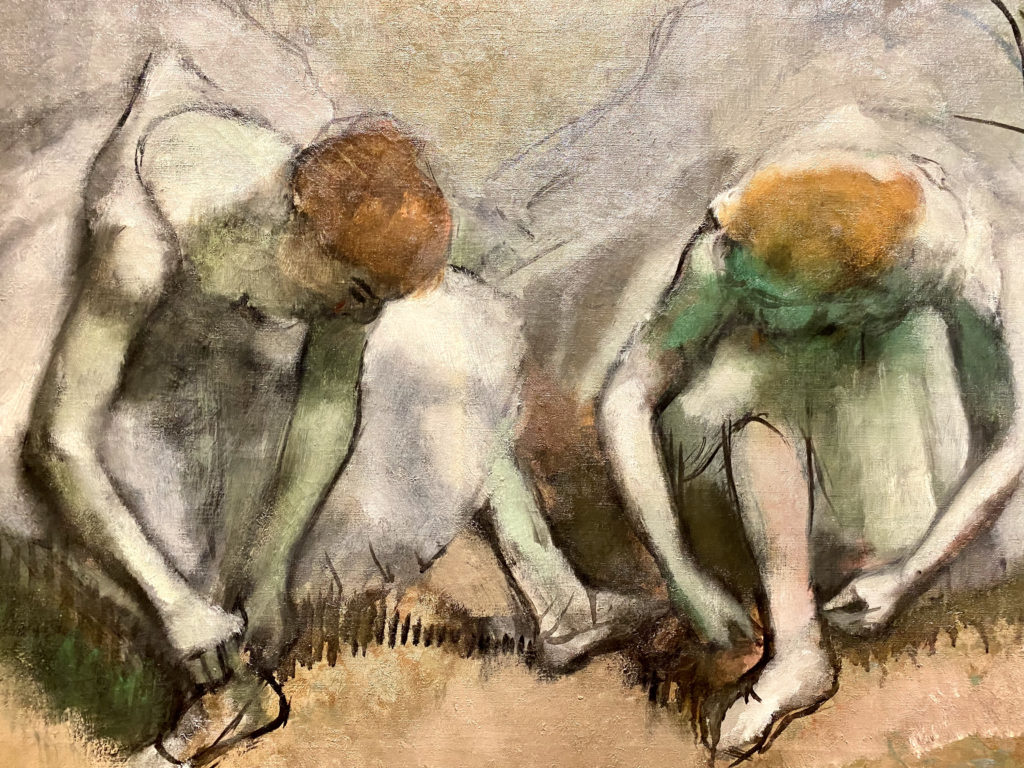
17. Degas’ Dancer Frieze
Edgar Degas is often lumped in with the Impressionists. His work does have the ephemeral quality of the Impressionists. But he never painted outside.
Degas’ favorite painting subjects were ballerinas and dance studios. He liked rendering the dancers’ movements and painting the pastel colored outfits. The subject suited Degas’ taste for classical beauty and his eye for modern realism.
Ballet was a fashionable part of Parisian cultural life. Degas was likely in the audience before he began to paint dancers.
In Dancer Frieze, Degas used an radical figurative composition. He depicts a single dancer as seen from four different viewpoints. The dancer is in an undefined setting with only wisps of color in the background.
Degas even added the circles in the foreground with his thumb. The audacity of the work shocked the artist’s contemporaries.
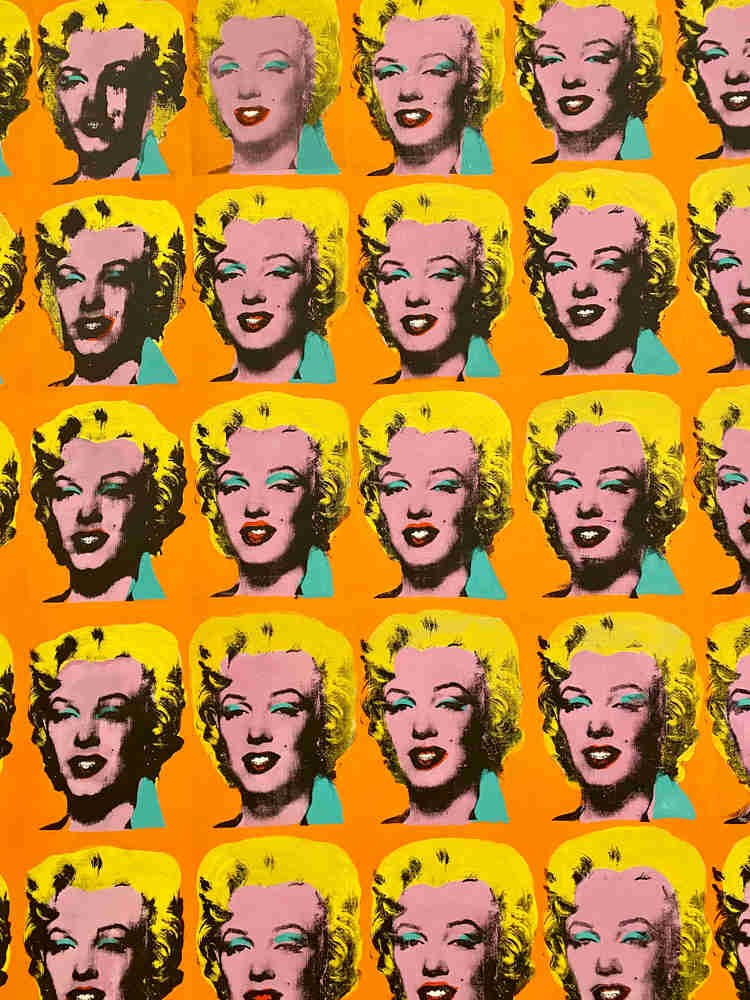
18. Andy Warhol’s Marilyn x 100
Marilyn Monroe was the perfect subject for Warhol. The Prince of Pop was obsessed with both celebrity and death. Monroe was a talented but misunderstood starlet.
Her star burned brightly. But she was the victim of her own success.
Immediately after her death in 1962, Warhol created devotional day glow silkscreens of her face for months on end. The silkscreens make clear that Monroe herself had become an actual object.
Her face was no different from a Warhol soup can. What’s unclear, however, was whether Warhol was celebrating America’s fascination with stardom or satirizing it.
You can’t tell whether he was expressing horror at Monroe’s suicide or depicting compassion fatigue. I’d like to think there was a subversive element or some cynicism at work.
READ: Guide To the Andy Warhol Museum in Pittsburgh
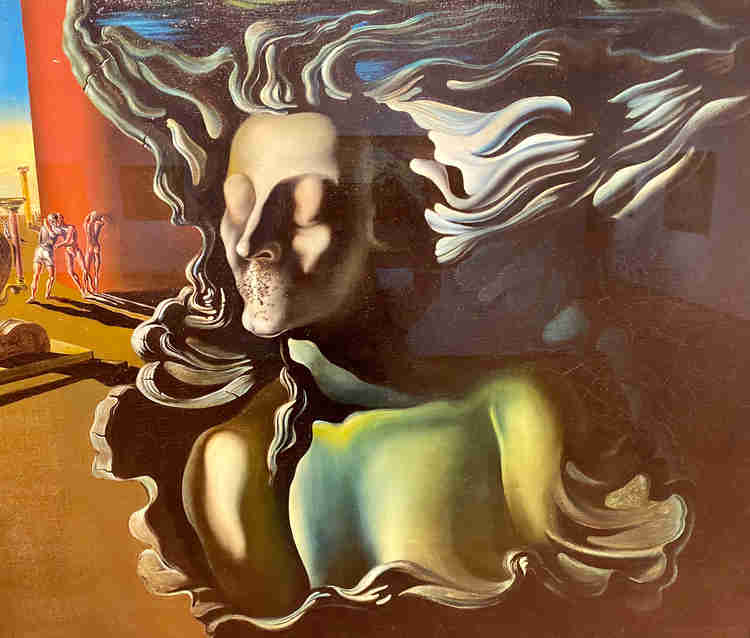
19. Salvator Dali’s The Dream
Dali was a famed Suurealist artist. He had an unrestricted imagination. He was also a superb draftsman.
Dali created deliberate images of seemingly impossible, hallucinatory worlds. His realistic canvases are diamond sharp. They have a strange airless quality.
Dali ambiguously called his work “handmade photography of concrete irrationality.” Dali also fancied himself a Freudian painter of dreams.
In this strange painting, ants cluster over the central female figure, obscuring her mouth. She has bulging eyelids. Here hair floats all around her, almost as though underwater.
The man on the far left is bleeding. He has an amputated left foot. This may be a reference to the classical myth of Oedipus. Oedipus tragically (and unwittingly) killed his father and married his mother.
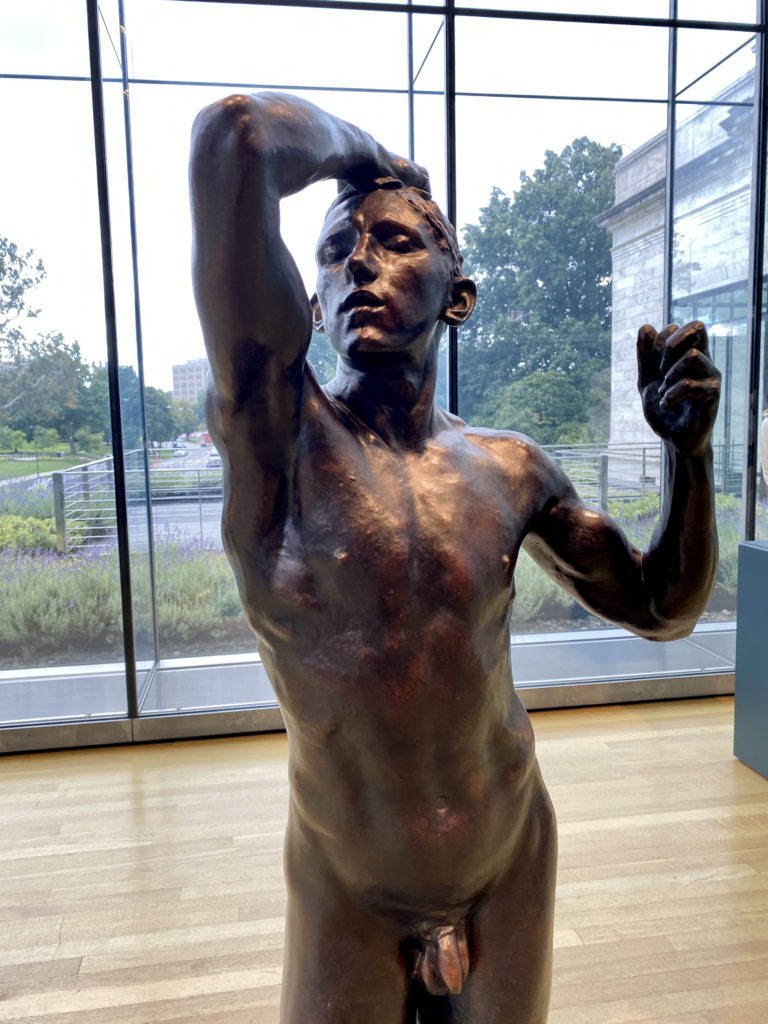
20. Rodin’s The Age of Bronze
Auguste Rodin is considered the father of modern sculpture. He was absurdly talented. His works were a torrent of expressive power.
Rodin’s first breakthrough came in 1877 with the exhibition of The Age of Bronze at the Paris Salon. The sculpture was initially titled The Vanquished.
Age of Bronze is a life size statue of a emotional man in a moment of awakening. The sculpture was technically perfect and remarkably naturalistic.
So perfect that, when it was first exhibited, the sculpture sparked a critical scandal. Rodin was publicly accused of casting the statue from an actual model or corpse.
The Age of Bronze was replicated in many materials. The NGA’s version is an 1898 casting in marble. The NGA also owns some other Rodin sculptures, including a smaller bronze version of The Age of Bronze and a bronze of The Thinker.
READ: Guide To the Rodin Museum in Paris
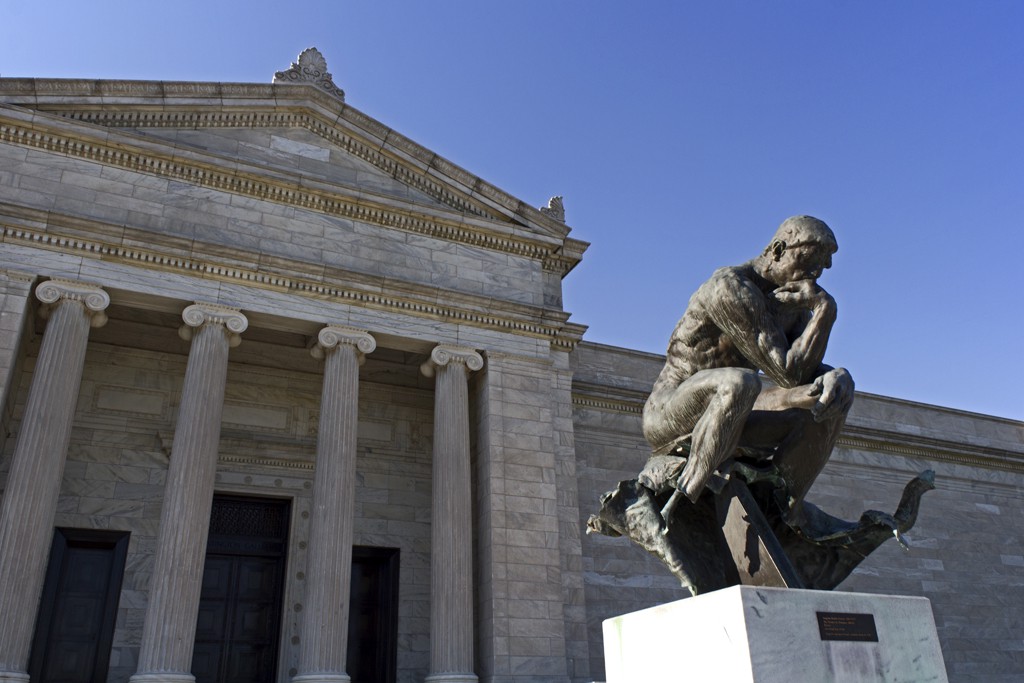
21. Rodin’s The Thinker, South Terrace
All told, there are 25 versions of Auguste Rodin’s famous Thinker. Fewer than ten were cast and patinated during his lifetime.
One of the last Rodin-supervised casts sits directly in front of the museum. Clevelander Ralph T. King purchased it directly from Rodin in 1916. He then donated it to museum in 1917.
The seated figure is a contemplative, melancholy man. The sculpture is highly influenced by the great Renaissance artist Michelangelo. But it also seems modern.
Rodin said “my Thinker thinks not only with his brain, with his knitted brow, his distended nostrils, and compressed lips, but with every muscle of his arms, back, and legs, with his clenched fist and gripping toes.”
Unlike the Age of Bronze, The Thinker isn’t strictly beautiful. Rodin didn’t care about admiration, and neither do his subjects.
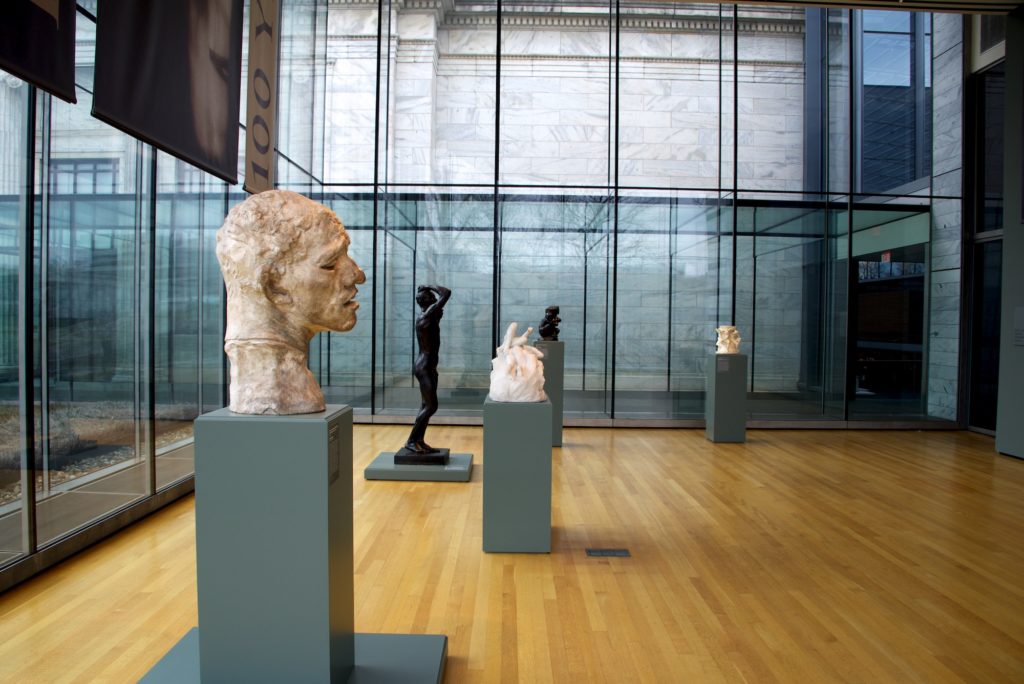
In 1970, Cleveland’s The Thinker was vandalized. A bomb was placed and detonated at the pedestal supporting the sculpture.
No one was injured in the blast. But the statue’s base and lower legs were destroyed.
The museum was unsure how to proceed. Should it create an entirely new cast to replace the damaged work? Or restore the sculpture by recasting elements of Rodin’s original?
In the end, the museum chose to the display the sculptures as is. The intent was to preserve what was left of the original Rodin casting.
Practical Guide & Tips For The Cleveland Museum of Art
Address: 11150 East Blvd, Cleveland, Ohio (in University Circle)
Hours: Tue/Thu/Sat/Sun 10am–5pm | Wed/Fri 10am–9pm | closed Mon
Cost: General Admission is always free (fees apply for some special exhibits/events).
Parking: CMA lot (past north entrance on the left), $10
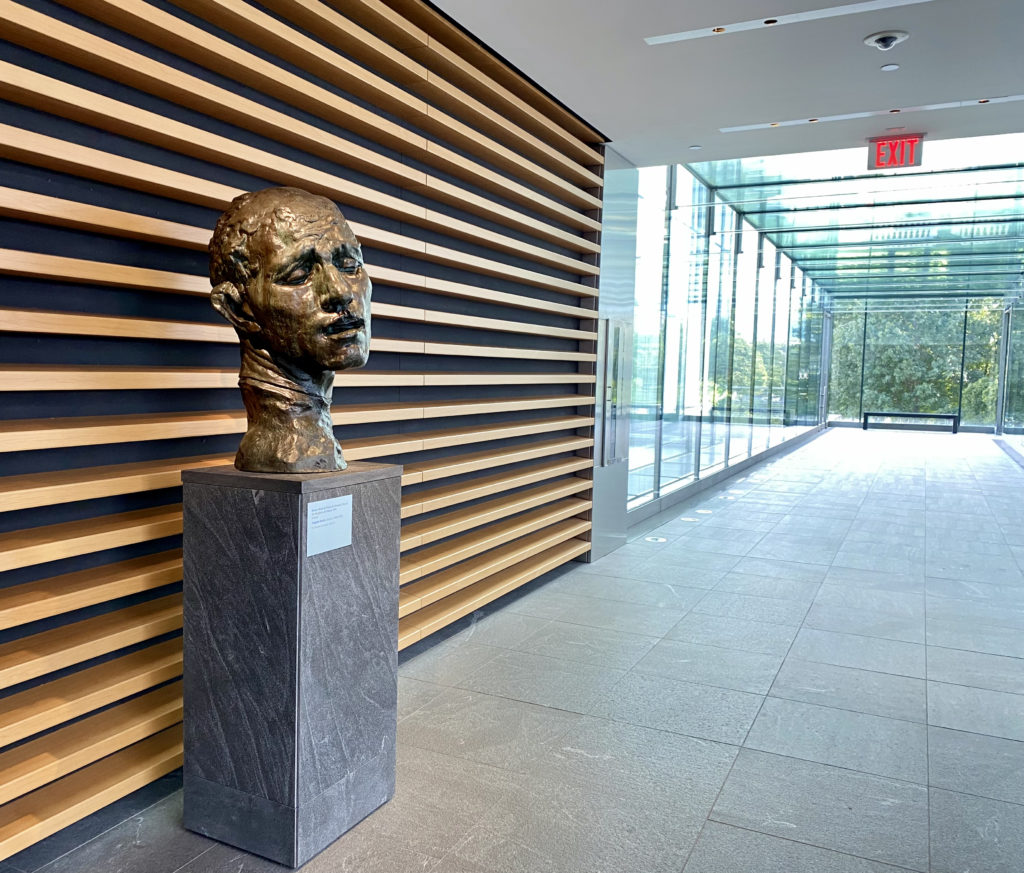
I hope you’ve enjoyed my guide to the Cleveland Museum of Art. You may enjoy these other United States travel guides.
- 2 day itinerary for Philadelphia
- 2 day itinerary for Denver
- 2 day itinerary for Cleveland
- 3 day itinerary for Boston
- 10 day itinerary for New Hampshire
- Hidden Gem Towns on the East Coast
- One week itinerary for southern New England
- Fall foliage road trip in New England
- 25 most beautiful towns in New England
- 45 amazing destinations in the United States
- Best places to visit in Massachusetts
If you need a guide to the Cleveland Museum of Art, pin it for later.

